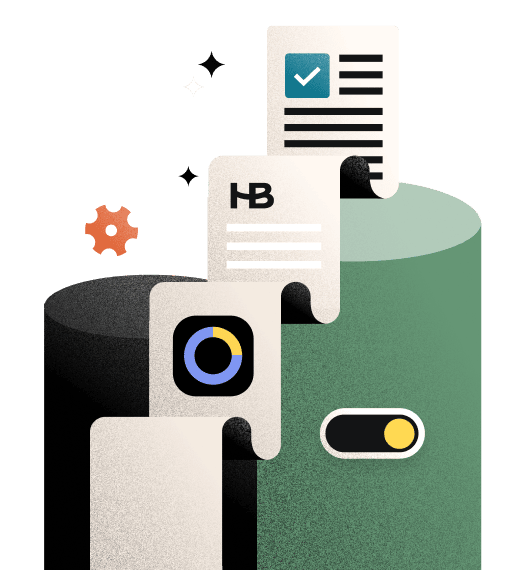The project discovery phase sets the tone for your relationship with your clients, providing you both with the information you need to work together. Learn how to execute a successful discovery stage with this step-by-step guide.

Before you can begin working one-on-one with a client you need a firm understanding of who your client is and what they need from you.
Enter the project discovery phase. This unique stage of client acquisition allows you to get to know your client, their project requirements, and the scope of work they want you to take on.
Read on to learn more about how to conduct a project discovery phase and position yourself for long-term, consistent client success.
Jump to:
- What is a project discovery phase?
- What’s included in the project discovery phase?
- Why is it important to conduct a project discovery phase?
- Who should participate in project discovery?
- What are the steps in a successful project discovery process?
- How do you know if your project discovery phase was a success?
- Improve project discovery with HoneyBook

Manage each step of your clientflow and ensure nothing slips through the cracks.
What is a project discovery phase?
Your project discovery phase is the period of time when you are working with your client to understand the project scope and how your work fits into your client’s broader business goals and needs.
It’s the initial stage of work that may come directly before or after booking.
What’s included in the project discovery phase?
The project discovery phase usually includes at least one meeting but may stretch to two or three meetings depending on the scope of the project and the number of people involved.
The project discovery phase involves:
- Meeting to discuss project goals, expectations, key performance indicators, and key deliverables
- Outlining which key stakeholders are responsible for which aspects of the project
- Creating a project roadmap with expected milestones for different portions of the project
- Creating project timelines
- Establishing or finalizing a project budget
- Discussing both project boundaries and professional boundaries to prevent scope creep
“Get as much info as you can upfront and be explicitly clear about how or how you cannot help someone. It’s okay if something doesn’t fit in your wheelhouse–prospects appreciate transparency. It’s okay to be an expert in one thing instead of being so-so in ten different things.” – Matthew Eriksen, Brand Designer and Business Coach at Good Brand Partners
Why is it important to conduct a project discovery phase?
Prioritizing the project discovery phase makes it more likely that the entire project will be successful and you’ll create a lasting client relationship. Remember that 65% of a freelancer or small business owner’s income comes from existing clients. This means that good relationships with your clients are essential.
During this phase, you can asses any potential risks like budget overruns, and ensure you have a successful plan in place to avoid those potential obstacles.
By standardizing the discovery process, you can ensure clear, consistent communication regardless of which client you’re working with or which project you’re working on. This will ultimately help you produce higher-quality work that meets — or even exceeds — client expectations.
Pro tip
Have a standardized process in place for project discovery. This makes you look professional to your clients while also ensuring you get the information you need to be successful.
Who should participate in project discovery?
The project discovery phase isn’t just a meeting between you and your client — unless, of course, you are the only two people involved in a project.
More often, project discovery should serve as a collaboration between everyone involved in a project, including team leaders, project managers, and individual workers or creatives. Collaborating as a team establishes the importance of collaboration, breaks down barriers between individuals, and ensures that you will be able to continue collaborating throughout the length of the project.
Pro tip
Although everyone on a project should be included in project discovery, not everyone needs to be in every meeting. Brainstorming sessions and project outlines should be held with everyone. Conversations about budgets, on the other hand, may be better conducted in a one-on-one setting.
What are the steps in a successful project discovery process?
The project discovery process is essentially a planning stage for your client relationships and projects. If you’ve already booked with the client, you should have a sense of the needs, budget, and timeline. However, these steps will help you determine the precise project boundaries and business requirements.
Timelines and project milestones
Establishing timelines and project milestones is one of the most straightforward steps in project discovery. It’s also a critical step. In fact, one report showed that businesses with a clear structure for project management are 38% more successful than businesses without.
This involves breaking large projects into smaller parts. The project scope will help you establish how many parts it needs to be broken into. For example, if the project is to write a blog post for a client, the timeline can be fairly truncated. You and the client can agree on a date for the first draft, a date for revision requests, and a date for the final draft.
If, on the other hand, the project is (for example) an entire marketing campaign, the timeline is going to be much larger, and there will be many more milestones.
Pro tip
Regardless of the scope of your project, create a specific timeline with due dates for each milestone and include clarification of who is in charge of meeting those due dates. Establishing these boundaries early on will make it easier to keep the project running smoothly.
Technical requirements
The next step in project discovery is determining your technical requirements. When working through technical requirements with your client, consider the following:
- What tools do you plan to use for client communication?
- What file formats will you submit work in, and where will you submit that work?
- Do you have access to the tools you need to track key metrics?
You may also want to discuss which tools you do and do not have access to. For example, if a client is asking for SEO-optimized marketing content, do they expect you to already have access to SEO-optimization tools like SEMRush, or are they providing those tools for you?
Understanding project goals
Project discovery also requires everyone to understand project goals.
Consider, for example, a client asking a photographer to supply marketing images. Any marketing images satisfy the direct requirements. However, if the photographer understands that the goal of the project is to improve social media engagement during the holidays, they will likely take very different photos than if the goal is to use photos to highlight features on a business proposal.
By establishing project goals as a team, you improve the chances of delivering on or exceeding client expectations.
Understanding potential challenges
Understanding potential challenges is pivotal during the project discovery phase, not just for anticipating hurdles but also for proactively strategizing solutions to those hurdles.
For example, if you’re a photographer and you need to take product images by a certain deadline, what should you do if the product arrives late? What should you do if a client fails to deliver their portion of a project on time? How will your team adjust the projected timeline to account for these types of challenges?
You can also discuss potential challenges like unexpected market fluctuations or major global events. The more you can try to anticipate potential challenges ahead of time, the more you can assess risks and plan strategies.
Be sure to delve into specific strategies for overcoming challenges, such as implementing real-time adjustments to the project roadmap or recalibrating team roles based on evolving circumstances. This level of detail demonstrates your foresight and instills confidence in your ability to navigate project complexities.
Pulling together the project team
The final step in conducting a project discovery phase is putting together your project team. This should include not only the individuals working on projects but also points of contact if those individuals are out of the office or unavailable.
Client management software can help you stay in touch with your team throughout the length of the project. This is a great way to remind one another of upcoming deadlines and hold each other accountable for individual portions of projects.
How do you know if your project discovery phase was a success?
The discovery process is designed to give you all of the information you need to take the next steps on a project. This means that your metrics for a successful discovery phase will depend on what it is that you need to properly address your client’s needs and what it takes to deliver a successful project.
Some questions you might ask yourself to determine if you’ve had a successful discovery phase include:
- Do we have a project roadmap?
- Do I have all of the information I need to complete my tasks on this project?
- Do I know what my client expects from me?
- Have we agreed on a budget?
Improve project discovery with HoneyBook
It’s one thing to plan for a successful project discovery phase with a single client. It’s something else entirely to set yourself up for continual project success by establishing a discovery process that you can use every time you acquire a new client or take on a new project.
When you establish a discovery process, you create a consistent experience for all of your clients. You never have to worry about whether you’ll forget a step or whether you’ll remember to ask the right questions. Moreover, you can consistently turn around high-quality projects that will exceed your clients’ expectations.
HoneyBook can help. Our all-in-one clientflow platform can help you schedule meetings, send automated questionnaires, and store client information all in one place. Get started with HoneyBook today.

Capture leads, sell services, manage projects, and nurture client relationships from one platform. All that and more with HoneyBook.



